Industry
Industry predictions – 2022

Stalwarts across the medical fraternity share their expectations over the year.
In light of the continuing pandemic, health at present has become the biggest priority for people and nations alike. In India, the pandemic outbreak had exposed several gaps in the existing healthcare infrastructure, that the government was quick to overcome with reforms and policy-level changes.
However, the Omicron variation is currently revising the timetable at the time of writing. The fact that the virus mutations appear to be able to evade some immune response through vaccines and infection, making herd immunity almost impossible is making it difficult to say whether the Omicron variant will herald a shift in the pandemic to an endemic.
The spikes in cases and emerging variants of concern are also prolonging the recovery for some companies, in some cases as far out as into the second half of 2022.
Industry Comments
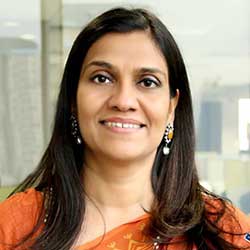
Charu Sehgal
Partner, Life Sciences and Health Care Leader,
Deloitte India
“Reintroducing tax holidays for rural hospitals with a flexibility to select beneficial years and viability gap funding by the government for setting up hospitals in Tier-I and Tier-II cities would make this area an attractive space for investment and strengthen the country’s healthcare infrastructure. A weighted deduction of expenses incurred on skill development in the healthcare sector would facilitate the government to achieve its aim of WHO-recommended doctor patient ratio of 1:1000 by 2024; bring more life-saving drugs at the lowest rate of GST and zero-rating of GST for healthcare services; increase in time period for closure of sale-on-approval (SOA) transactions from six months to 24 months; and provide certain relaxations under GST law for expired medicines. While the draft R&D policy focusses on creating an ecosystem for innovation and research, certain tax incentives for the investment in R&D-focused funds, and some set up for R&D-based activities, could be introduced. An old ask pending to be addressed is in relation to the current patent-box regime. The same needs improvement in terms of expanding its coverage to assignees/transferees of the patent instead of restricting it to only the true and first inventor of the invention. Introducing a reduced tax regime on commercialization of the patents anywhere across the globe will make it implementable.”

Ashok Patel
CEO and Founder,
Max Ventilator
“Doctors say that the pandemic will always be there till at least 6 years. So, all the businesses are prepared to deal with it. Even as Covid-19 has led to the rise of diagnostics and equipment, along with an impressive rise in virtual and homecare-driven device segments, there has been an increased emphasis on making low-cost lifesaving devices, such as ventilators and oxygen concentrators. Speaking especially of ventilators, from now onwards, the rule of four beds per ventilator will become more of a reality. With telemedicine and app-based online pharmacies becoming more of a constant surrounding our daily lives, spurring innovations in related devices and equipment, the coming year will also see more action in big data, AI, and machine learning-based disease prediction technologies, apart from a push to more sophisticated surgical devices meant for a range of conditions, such as neurological, cardio-vascular, oncological, orthopedic, or musculoskeletal conditions. However, I must add that for AI-based ventilators to become a reality, more time would be needed. While Make in India has gained momentum with the view to become more self-reliant, the Chinese products have received a setback. This means that quality will determine the entry of new products and more rigorous quality checks will increasingly become a norm. The coming year will also see major investment and focus on medical device components and parts in the country. At the same time, given the surging Omicron cases outside India, and a repeat of the same not totally being out of question in India, Covid-related devices and equipment will continue to remain a focus of attention of manufacturers in the country in the coming year.”
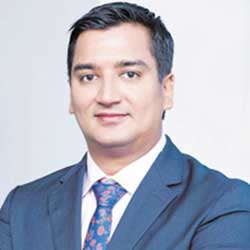
Dr Shravan Subramanyam
Senior Vice President, NATHEALTH and
Managing Director, Wipro GE Healthcare
“The pandemic brought about a radical shift in the way we look at medical emergencies, while also exposing the structural gaps in our health system. Evidently, healthcare is under-served and under-consumed. India needs a roadmap to create an inclusive and resilient medical infrastructure, which can be accomplished only by raising investment, both public and private. Covid-19 pandemic also necessitated self-reliance for India, Atmanirbhar Bharat. For Indian MedTech sector to be viable, NATHEALTH recommends waiving off the duty and cess and releasing sectorial payment dues, to free up the working capital for investments in inventory of critical spare and lifesaving equipment. NATHEALTH believes that to scale-up and move toward universal healthcare coverage, collaborative efforts from stakeholders across public and private sector will be pivotal.”

Mythri Macherla
Assistant Vice President & Sector Head, Corporate Sector Ratings,
ICRA Limited
“The performance of hospitals is expected to remain strong going forward, driven by healthy ramp-up in elective procedure volumes and strong ARPOB levels. Pent-up demand and market-share gains for organized players in the high-end/complex surgery space are supporting healthy occupancy levels while uptick in footfalls at metro centers of hospitals in addition to higher amount of surgical work is driving improvement in ARPOB. Overall, ICRA expects occupancy to improve to 62–64 in FY2022, from 52 percent in FY2021 for its sample set of seven listed hospital companies, while ARPOB is expected to expand by 8–10 percent. Benefits from improving scale, cost-optimization efforts, and ancillary revenues from Covid-19 are expected to support margin improvement for the sample set to 19–20 percent in FY2022. Further, given healthy accruals and relatively lower debt levels, debt metrics for the sample set are expected to witness considerable improvement in FY2022. That said, evolving nature of the pandemic continues to remain a key monitorable.”
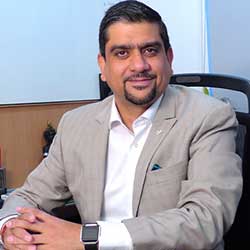
Vikram Thaploo
CEO,
Apollo Telehealth
“The Covid-19 pandemic resulted in massive disruptions across different industries, and the healthcare industry has definitely been hit hard. But thankfully, the healthcare industry effectively managed the outbreak owing to full support from the central and state governments. Although there has been slow adaptation of digital tools in the healthcare industry, everything changed with the outbreak of the pandemic. The effect of healthcare technology and digital solutions was felt in many different ways than we could have expected. During the lockdown, both the patients and the healthcare practitioners realized the importance of digitization. The pandemic has almost entirely changed how the healthcare industry in India operates. With telehealth, hospitals are now also concerned about reaching patients online, and how to deliver and protect patient information. Telemedicine and remote patient monitoring are being increasingly adopted by service providers to virtually manage patients, predict and prevent illnesses, and improve clinical outcomes. There’s been almost an 80-percent rise in consumption of digital healthcare services after Covid-19. Digital technologies like extended reality, cloud systems, big data, and artificial intelligence are taking the centerstage to enhance user-experience and increase process efficiency. These technologies have accelerated digital health, remote patient monitoring, and timely clinical protocols. In the coming years too, digital health applications and therapeutics, personal health wearables, and AI, NLP (neural language processing), robotics process automation or the RPA-enabled process accelerators in clinical prediction, operational transformation, and compliance improvement will further drive and shape the future of healthcare.”

Dr Chandrashekhar T
Director-Critical Care,
Fortis Hiranandani Hospital, Vashi
“The healthcare industry has been undergoing a transformation-backed MedTech advancement and growing clinical science. However, the pandemic accelerated this growth and transformation in many ways. Our understating toward genetics and diseases has evolved, and will continue to evolve with each passing year. Today, the healthcare sector relies a lot on data analytics and AI than ever before. As we see the industry landscape changing, healthcare providers are embracing medical technologies to help and improve patient outcomes and experience. For instance, during the last 20 months, there has been a spike in the use of telemedicine and virtual care programs. These programs help doctors to monitor patients remotely through sensors that enable to track health records, vital signs, and other healthcare data of the patient, facilitating timely intervention. With one of the most ground-breaking years in medical history now behind us, 2022 is likely to continue this momentum and will continue to change the trajectory of health.”
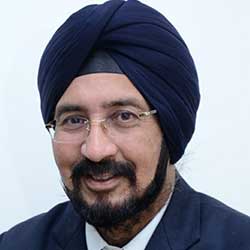
Dr HS Chhabra
Director,
Indian Spinal Injuries Centre
“The year 2021 was a challenging one for India’s health sector, as the lethal second wave of coronavirus struck. As a result, an unprecedented number of people lost their lives and there was unparalleled suffering for countless others. It did, however, serve as a valuable lesson for the entire healthcare industry, leading to the resurrection and upgrading of health infrastructure in both the public and private sectors. We not only have a completely functional oxygen plant but are also now fully equipped to face new challenges, such as Omicron, with a team of experienced doctors and paramedical staff. As we approach 2022, I strongly advise everyone to take both the doses of the vaccine, if already not taken. Also, continue to observe social-distancing measures, wear masks, practice hand hygiene, and adhere to all the guidelines issued by the government.”
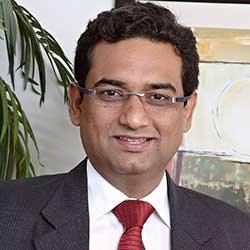
Amol Naikawadi
Joint Managing Director,
Indus Health Plus
“While the pandemic is still on, and with all the challenges healthcare industry has been facing, there also has been opportunity and growth. The increased demand for home healthcare solutions in India, promises growth as well. The reason behind enhanced demand for personalized care is the higher elderly population and the rise in number of chronic lifestyle diseases. In order to increase the longevity and quality of human lives, we can also expect that in the coming times, technological demand in healthcare industry is going to be a game changer with advancements in artificial intelligence, automation, etc. With all the increasing demand and technological advancements, there is tremendous growth in investment opportunities in India’s healthcare industry across hospitals, medical devices, testing and screenings, pharmaceuticals, and in areas of new technologies. Besides this, technologies like genetic screening are also gaining momentum, which enhance the understanding on predisposition of various illnesses and have the ability to recommend precise medication.”












